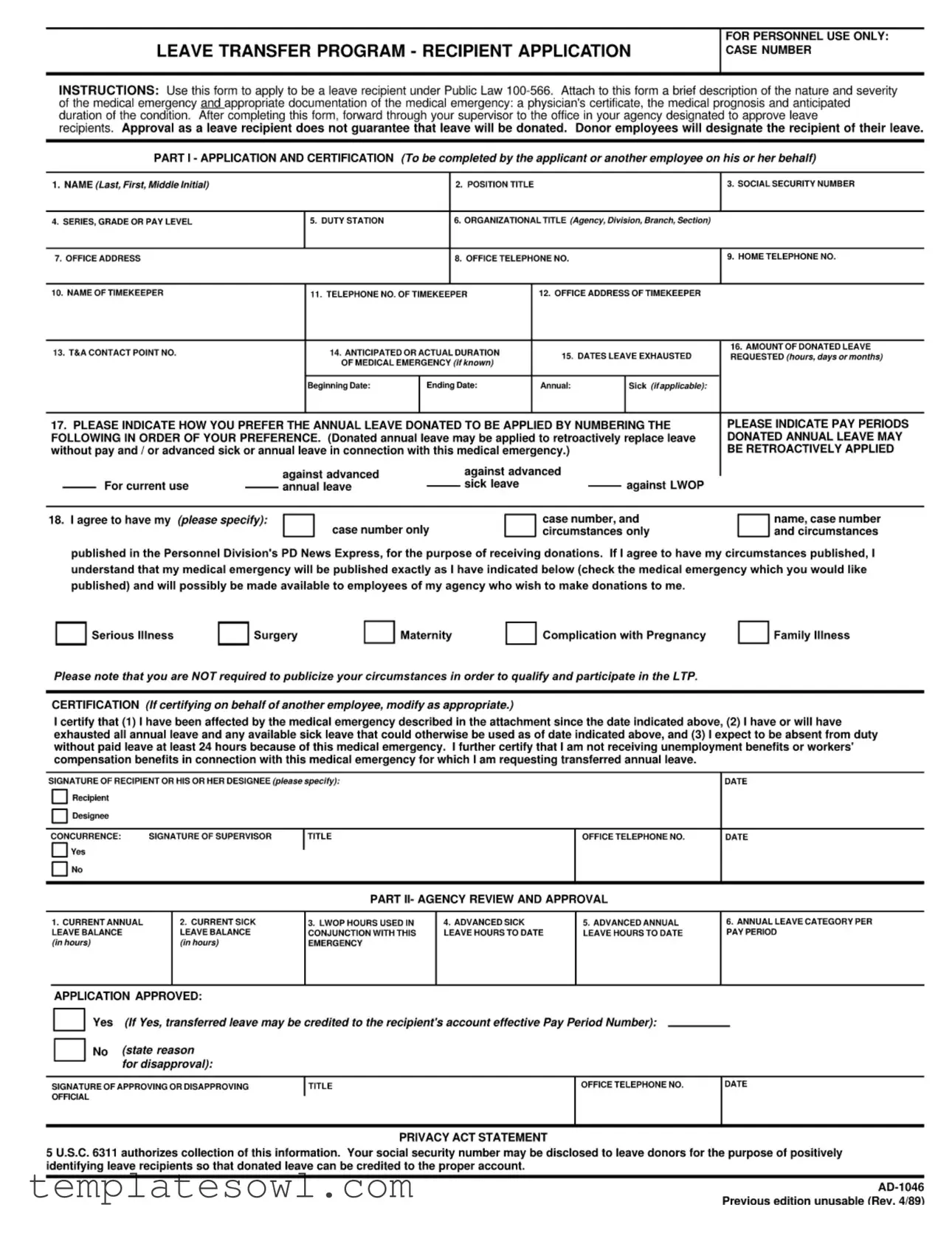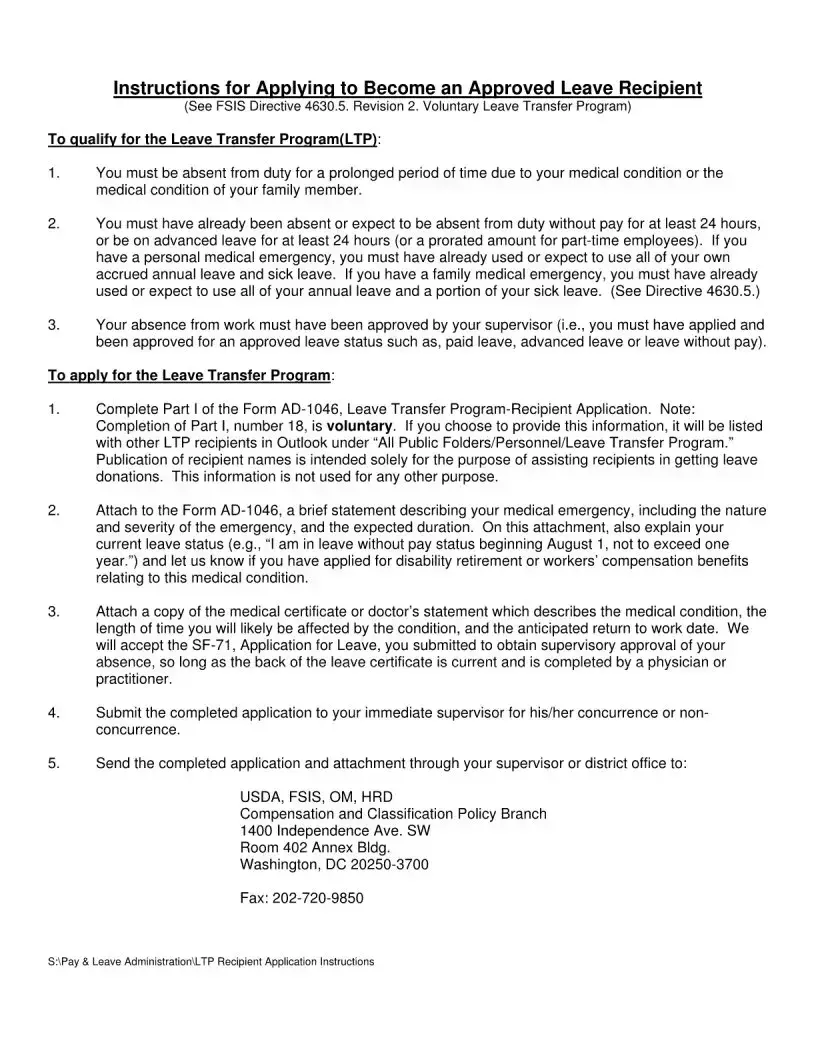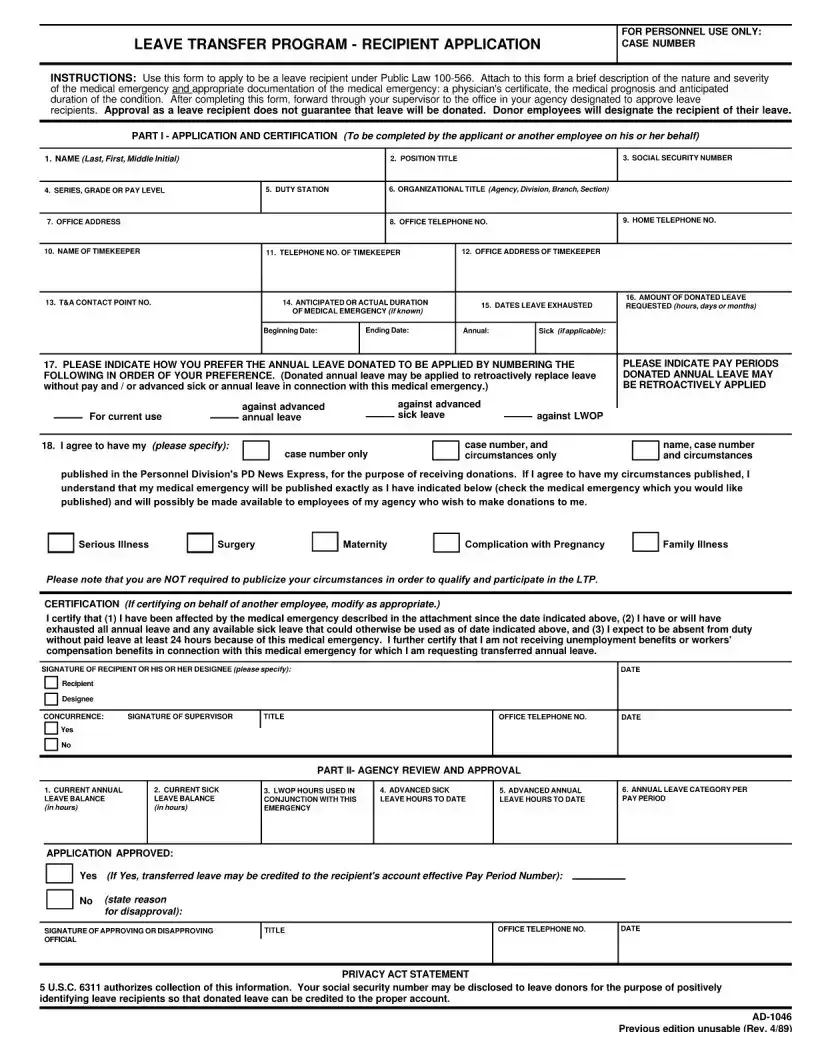What is the purpose of the AD 1046 form?
The AD 1046 form is used to apply for participation in the Leave Transfer Program under Public Law 100-566. This program allows employees facing medical emergencies to receive donated leave from coworkers. By applying, individuals seek to become leave recipients.
Who is eligible to apply for the Leave Transfer Program?
To qualify, an applicant must be experiencing a significant medical condition either personally or due to a family member. The applicant must have already exhausted their annual and sick leave, or expect to be absent without pay for at least 24 hours. Additionally, the absence must be approved by the supervisor.
What information is required to complete the form?
Applicants need to provide personal details such as name, social security number, position title, and contact information. A description of the medical emergency, documentation from a physician, and the anticipated duration of the absence should also be attached. It is essential to indicate how much leave is needed and any preferences for applying donated leave.
Is it mandatory to disclose the nature of my medical situation on the form?
No, disclosing the specifics of your medical situation is not a requirement. However, sharing some information may help fellow employees understand the need for donations. Only provide details you are comfortable sharing if you decide to publicize your circumstances.
Once I submit the AD 1046 form, what happens next?
The completed application should be sent through your supervisor to the designated office within your agency. The application will be reviewed, and approval is required before any donated leave can be applied to your account. If approved, specific pay periods for the leave may be designated.
What documentation must be submitted along with the form?
Along with the AD 1046 form, applicants must attach a brief statement outlining the medical emergency and supporting documentation, such as a physician’s certificate. This should include details about the condition, prognosis, and any anticipated leave duration.
Can I receive donated leave if my application is approved?
Approval as a leave recipient does not guarantee that leave will be donated. Donations depend on the willingness of other employees to contribute their leave. The process allows donors to select the recipients of their donated leave.
What happens if my application is disapproved?
If your application is disapproved, the reviewing official will provide a reason for the decision. You may be able to address any issues raised and reapply if your circumstances change or additional documentation becomes available.


